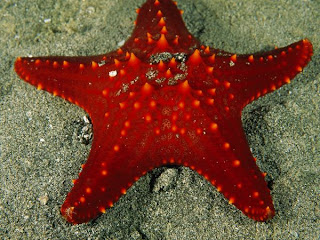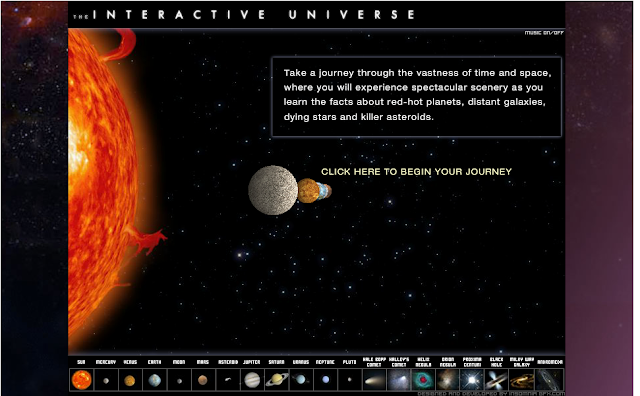Invertebrate animals are alike in one way: they have no inner skeleton or backbone. Invertebrates differ, however, in size, shape and body covering.
SIZE: Most invertebrates are very small, only a few centimetres, but some are enormous, like the giant squid.
Look! This is a picture of a giant squid found near Japan:
BODY SHAPE: Most invertebrates are symmetrical.
- Bilateral symmetry: Two identical halves or planes. For example: insects.
- Radial symmetry: Several planes of symmetry. For example: starfish.
- Asymmetry: The body has no symmetry. It is irregular. For example: sponges.
Look at the following diagram which shows the different kinds of symmetry:
BODY COVERING: Some invertebrate bodies are protected by shells or exoskeletons (like scorpions or snails), but others have no covering.
WHERE AND HOW INVERTEBRATES LIVE
Invertebrates differ in their habitat and their movement.
- Many invertebrates live in the ocean, but some live in fresh water, and others on land.
- Most invertebrates can move. However, some do not move: they attach themselves to rocks or the ocean floor. Parasites live inside other animals and harm them.
INVERTEBRATE GROUPS
There are many groups of invertebrates. For example:
SPONGES
They have irregular bodies and no symmetry. They cannot move around. They attach themselves to rocks or the ocean floor. They filter sea water and retain the nutritive substances for food.
CNIDARIANS
They have jelly-like bodies, some with radial symmetry. They have tentacles that sting you. They are marine animals. Some, like coral and sea anemone, attach themselves to rocks. Others, such as medusas, can move about.
WORMS
They have soft bodies with bilateral symmetry. Some are cilindrical, but others are flat. Some worms are aquatic; others are terrestrial. Many are parasites.
ECHINODERMS
They have five-way symmetry. They have a skeleton made of hard plates, often with spines. They are covered by a thin skin. All are marine animals.
ARTHROPODS
They have bilateral symmetry. Their bodies are totally coveredby an articulated exoskeleton, like armour. Some are aquatic; otheres are terrestrial.
MOLLUSKS
They have a soft body with bilateral symmetry. Many are covered with one or two shells.
Can you identify the invertebrate animals? Click the image below and play the game!

























